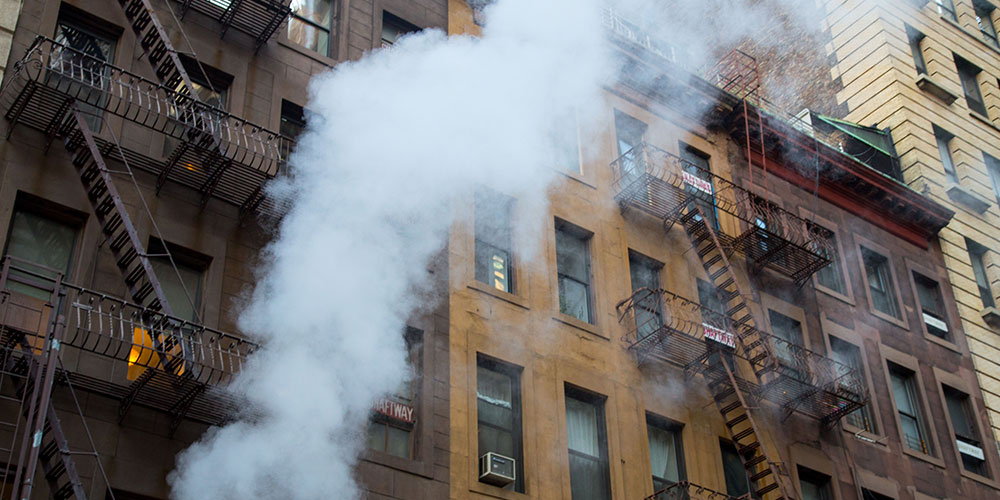
With multiple units within close proximity of one another, residential buildings, like apartment complexes and townhouses, face unique fire risks. In 2013, 98,000 apartment fires caused 325 deaths and 3,900 injuries.
Property managers must have a thorough understanding of common fire hazards in multi-resident buildings and local fire code regulations. Furthermore, property managers need to understand their responsibilities and duties with regard to fire safety across buildings.
Here’s what you need to know to keep your buildings safe and adhered to fire code.
Common Fire Hazards
Apartment complexes and multi-resident buildings are just as prone to accidental fires as a private home. However, a fire that starts in one tenant’s space has the ability to spread throughout the whole building, putting everyone at risk.
Some common fire hazards include:
- Kitchen: Unattended food on stovetops and in ovens can cause serious damage.
- Heating: Think space heaters and radiators, which can overheat and become flammable.
- Open Flame: Candles and other open flames placed close to flammable objects, such as curtains and paper, can cause quick-spreading fires.
Educate residents on the proper safety precautions they should take daily to avoid fire risks. Do so often via flyer, email communication or open meetings.
Get Up To Code
Fire codes and regulations vary by state and municipality, but typically include proper notification and detection. To stay compliant, you must meet the standards of whichever agency is most restrictive. Fire codes will inform you on how many smoke detectors, exits, pull alarms, extinguishers, illuminated exit signs, fire escapes, etc. are necessary to be lawful, and where they should be located.
Furthermore, some sates may mandate that each residential building test alarm equipment regularly through fire drills and inspections by the local fire department or city inspector. For more specific requirements on a local level, contact your government agency to identify what codes you must abide.
Utilize Technology To Promote Fire Safety
The use of a connected fire alarm system will detect danger and inform all residents of a situation, not just those in the affected room. Fire systems also can mitigate the spread of damage, as you can catch fires before they spread.
Know what types of smoke detectors should go where. Smoke detectors come in two variations—ionization and photoelectric—and each detect smoke differently. Ionizing smoke alarms work best in situations with rapidly moving flames—i.e. kitchen or candle fires. On the other hand, photoelectric smoke alarms perform best when detecting slow-to-start fires, such as those caused by smoking apparatuses or heating appliances.
A monitored alarm will ensure authorities are dispatched quickly by sending an emergency signal to a 24/7 monitoring center if alarms are triggered. (Pro tip: Save money on traditional POTS phone lines by using an AES radio platform for alarm signal communication.)
For more information on strategizing fire safety with technology, contact us.
What steps have you taken to secure your buildings from fire? Share your thoughts in the comments below.